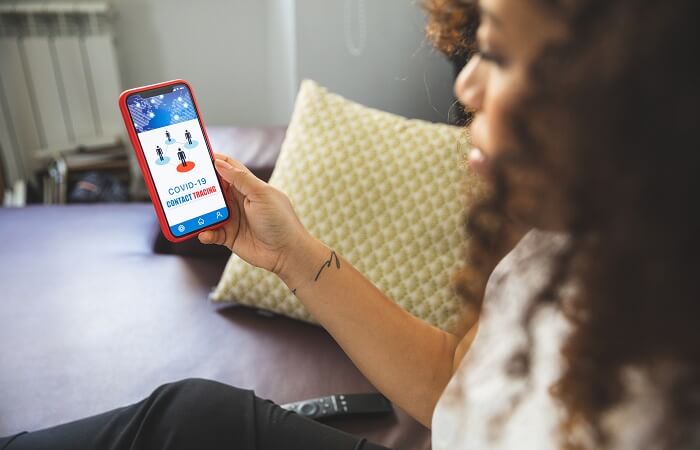Showing Up to Work is More Complex Than Ever
Testing and contact tracing help employers keep their workforce safe.
Testing and contact tracing help employers keep their workforce safe.

Remember when going to work was just an ordinary and (mostly) predictable experience? These days, returning to the workplace has become much more complicated thanks to COVID-19. How can you feel confident that your workplace won’t unwittingly become a transmission hub? How will you know if you’re at direct risk for exposure? What if someone in your household tested positive and you fear your colleagues may have been exposed? What happens after you or a colleague test positive? What about HIPAA and ADA compliance?
These questions and more are being asked every day as employers seek to safely re-open or return employees to traditional working environments. All of a sudden, showing up to work on a Monday morning isn’t as straightforward as it used to be.
For most of us, the workplace is where we have the most social interaction, and therefore the most potential exposure. Since people may be carriers without presenting symptoms, workplaces should integrate testing and contact tracing to minimize transmission, in addition to following recommendations on sanitizing, face coverings and physical distancing.
For employers providing essential services, testing and contact tracing becomes essential, as well. For everyone else, employers should consider whether having people go back to the workplace is truly necessary.
The fact that COVID-19 can spread without the person showing symptoms means it’s that much more important to take precautionary measures to protect the workforce, as well as the public. This includes testing and screening of employees, contractors, vendors and visitors.
Ideally, employees should be checking their temperature at home and self-report any potential coronavirus symptoms they may be experiencing before leaving for work on a daily basis. In every scenario, rapid detection is key. Employers should encourage workers to get tested through community testing programs if they suspect they may be infected, or employers may consider setting up their own testing facility to provide employees a convenient place to be tested and faster test results.
Regardless of whether employers have their own testing facility or just opt for temperature checks, appropriate PPE for on-site screening and a safe area for employees who may have positive symptoms should be considered. Employers should establish clear guidelines regarding testing and what happens if someone doesn’t pass, including having a plan for transporting people to an appropriate medical facility.
The ADA and Rehabilitation Act rules do not interfere with workplace COVID-19 screenings and temperature checks. However, in consideration of HIPAA laws, employers should not share the identity of the individual who has tested positive. Instead, employers should communicate with employees about the confirmed positive case and measures the employer is taking to clean and sanitize affected workplace areas and keep the workforce safe.
Contact tracing is a basic disease control measure that has been employed by local and state health department personnel for decades. This tool has been used to successfully control outbreaks of other communicable diseases the world over, including tuberculosis, measles, and now, COVID-19. While public health officials are primarily responsible for community contact tracing, employers can play an important role in minimizing the spread of the virus.
This includes identifying infected employees and tracking any contacts they may have had while on the job, and sharing this information with public health officials to assist with contact tracing efforts. Through public health officials, contacts are provided information and support to help them understand their risk, how to self-isolate and how to monitor themselves for illness.
Though not without privacy concerns, certain contact tracing apps can help employers track employee movements while at work. If a worker becomes sick, the employer can quickly identify with whom they have been in contact and which physical locations need to be sanitized. Symptom tracking apps can also let users self-report any health symptoms and their location to help scientists understand virus spread.
Getting employee buy-in is a crucial step before rolling out device-based contact tracing. Protecting employee privacy is important, so employers should consider apps that keep geolocation data anonymous and encrypted, and delete the data after a period of time.
This new world requires new operating measures to protect the safety and health of the workforce and the public. While employers have been responsible for providing employees a safe place to work before, the threat of COVID-19 has made that more important than ever.
With a century-long legacy, the National Safety Council is a global center for safety expertise. Let's work together to align resources. We look forward to learning about ways we can join efforts to expand safety everywhere!
There are no items in your cart